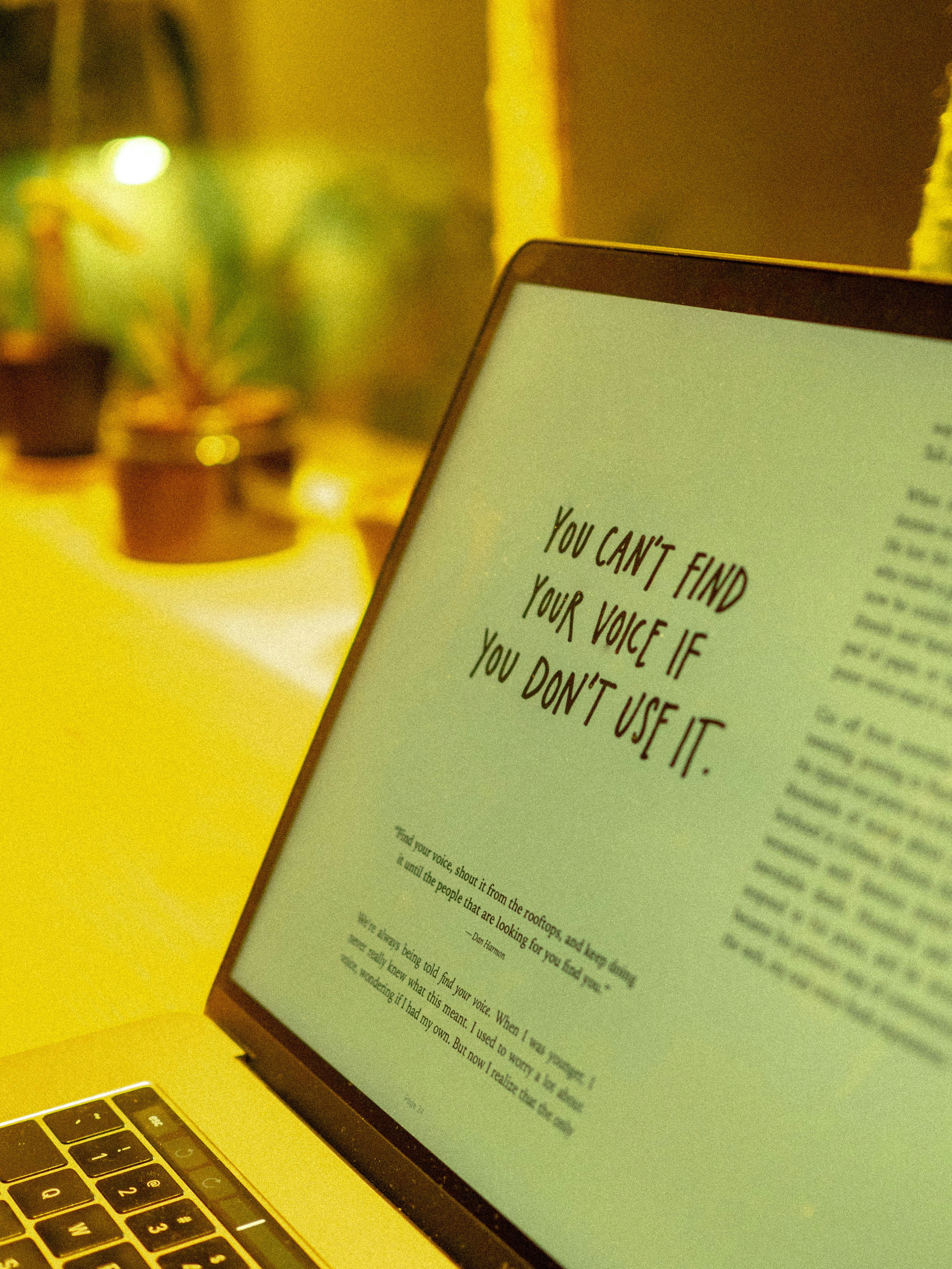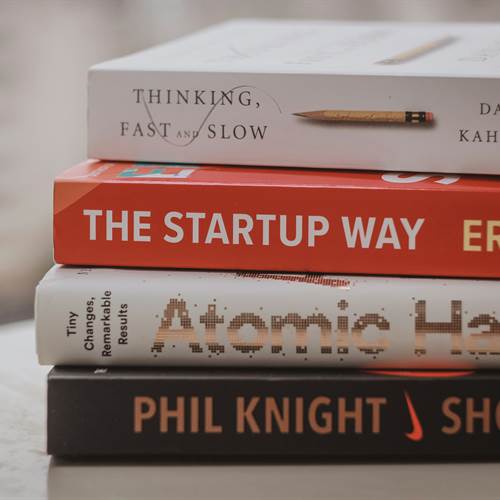
How to "Sound Like You"? Finding Your Own Singing Voice
Posted Saturday, February 24th 2024 by Andrea Grody
In this article, I discuss how singers can "find" their own singing voice by improving their technical ability and clarifying their artistic voice.
I have many students who talk to me about wanting to find “my own voice.” Sometimes they don’t know what their voice might be. Sometimes they want to expand their vocal abilities but feel like they’re limited in some way by what their voice can and can’t do. The secret to finding and owning your own voice is recognizing the difference between technical ability and artistic inclination: in other words, there’s a difference between what we can do as vocal athletes and what we choose to do as vocal artists.
Technique vs. Artistry
Your technical ability encompasses the complete library of sonic and technical options that your vocal instrument is capable of making. This includes technical skills you have yet to develop. In voice lessons, you can increase your vocal flexibility, your belting range, the kinds of sounds you can make on different notes within your range, the number of stylistic choices you can make, and even extended techniques like distortion.
Your artistic inclination, or your creative instincts, are the kind of sounds you want to make. Your artistic inclination develops from an early age based on the kinds of music you hear throughout your life, the art you’ve been engaging with both actively and passively. It manifests as what you do and don’t like — the sounds that do or don’t interest you. Just like your technical ability, your artistic inclination evolves over time as your tastes change and you explore different avenues.
As a voice teacher, my goal is to expand your technical ability as much as possible so that your artistic inclinations are never limited by technical concerns. You may not choose to make every sound you can make, but my mission is to show you how you can access them should you ever choose to do so.
The twist, though, is that we don’t always know where or how to explore until someone shows us what’s possible. We develop our first creative instincts based on what we hear as young artists, and sometimes we need guidance to know what else is out there. That’s why taking voice lessons can be so useful!
Some common technical roadblocks...
There are some common technical issues that often make singers feel like they haven’t found their own voices yet. The most regular culprits relate to larynx position and registration.
Larynx position: Our larynx can move up and down in the throat, and different positions create vocal qualities that are suited to different styles. A lower larynx gives us the fuller, deeper quality of classical music, like opera, while a higher larynx is more commonly used for rock and pop music. At either extreme, low and high larynx positions sound like cartoons: a high larynx sounds like Alvin and the Chipmunks, while a low larynx sounds like slow-motion.
If you’ve learned to sing in a particular style, you may have gotten used to one larynx position, meaning singing in another larynx position feels wrong or not even possible. If you’ve grown up singing classical music, you might think a lower larynx is an essential part of your singing voice. If you speak with a higher larynx or are used to singing pop or rock music, a neutral larynx might feel very low.
Exploring different larynx positions can not only help you find a more natural voice but can also demonstrate just how varied the concept of “your own voice” can be. For example, I try to help all of my students learn to sing in a neutral larynx position. Singing this way often feels more like speaking than people expect singing to be, and it also often feels easier than people expect. For singers who are used to engaging more muscles at the laryngeal level than they need, this alone can open a lot of creative doors and show that singing doesn’t have to feel as hard as they might think!
Registration: Chest register (otherwise known as M1), head register (otherwise known as M2), and mix registers (combinations of M1 and M2) are all available to us at different parts of our ranges. If your past experience has led you to favor one register over the other, the other options will feel very foreign to you. Give it time, though! As you develop these registers, they will become more familiar, and the feelings that can make singing feel unnatural at first will integrate and become more comfortable. As this happens, you’ll learn to increase the spectrum of colors available to you throughout your range, and they’ll feel more like they’re coming from you naturally.
Your artistic voice
Let’s say you’ve developed your technical skills, but you still don’t feel like you know what “your own voice” is. What should you do?
It’s time to develop your artistic voice further. While your creative preferences can seem even less changeable than your technique, they’re actually just as flexible — as long as you’re open to exploring how you feel!
Start by understanding your artistic preferences. What kinds of music do you like? What artists’ voices make you want to listen to them more? What songs or phrases or musical moments stick in your brain and inspire you to sing yourself in the first place?
If you’re not sure, see if you can identify what you don’t like first. There are no right answers here: anything that makes you feel something or makes you either want to listen again or turn it off quickly is worth noting.
As you identify songs or voices that appeal to you, dig deeper into what you’re hearing and see if you can break it down into some technical elements. What vocal register is the singer using? How are they starting and ending their words? Once you’ve pinpointed some technical elements you like, you can try using them yourself. You can start simply by imitating the artists you hear, or you can apply what you’re picking up to other songs. Ask your voice teacher for guidance if you need help navigating the technical aspects. Notice how those experiences feel in your body; do they trigger any emotions for you? Do they feel good? Do you like how you sound when you listen back to a recording of yourself later?
As you explore, learn more about the original artists’ motivations and the cultural context for their choices. See if there are any connections between their experiences and yours that can inspire your future artistry. In other words, be curious! Your artistic voice will only get stronger and more nuanced as you add context to your physical vocal experiences.
Owning your own voice
Developing your artistic voice is a lifelong pursuit. Whether you’re focusing on technical or creative elements, remember to celebrate every moment of progress, including progress in your awareness and creative opinions. At the end of the day, if you’re choosing what you want to do vocally in service of the music you want to make, you are using your own voice. Singing should be joyful — enjoy it!

Andrea Grody
Senior Voice Teacher Associate, Musical Theatre Career Consultant, Resident Music Director
Andrea Grody was the original Music Director/Supervisor of the Tony Award-winning Broadway musical The Band’s Visit, is Musical Director/Supervisor & Vocal Arranger for the 2019 new musical adaptation of Tootsie, and dozens more critically-acclaimed musicals & performances across the country and NYC. Andrea discovered a love for vocal technique and voice teaching after completing her Voice Teacher Training & Certification course in 2015. She is currently developing Songwise, an online learning platform that teaches singers to read music.

How to Practice Singing Part IV: Creating a Practice Habit that Sticks!
In part IV of the "How To Practice Singing" series, I discuss practical ways of creating practice habits for singing that promote consistency by applying the four laws for behavior change to our work.

Why We Use Vocal Exercises
In this article, Tim Rosser shares the benefits of using vocal exercises for voice training and how singers can use vocal exercises appropriately to their advantage.

How To Practice Singing Part VIII: Breaking Bad Habits Using the Inverse Laws
In Part VIII of the "How To Practice Singing" series, Zac discusses how the laws of making habits can be applied inversely to help us break bad habits in our singing practice.